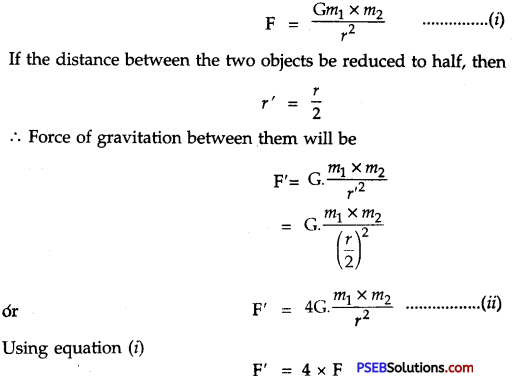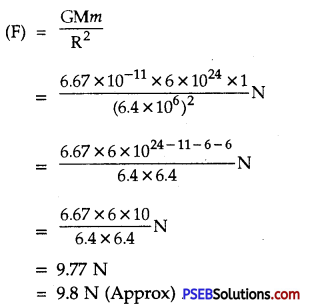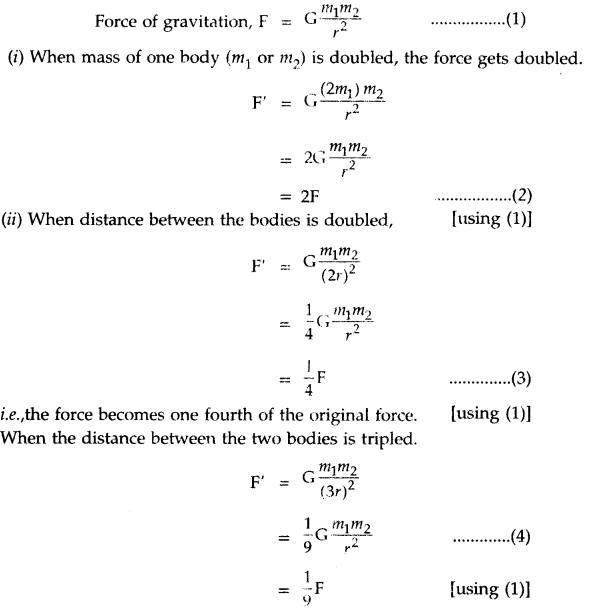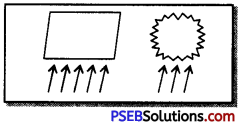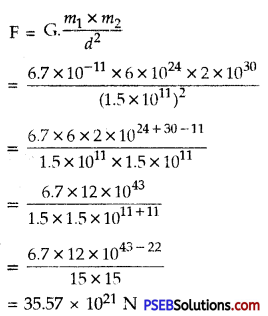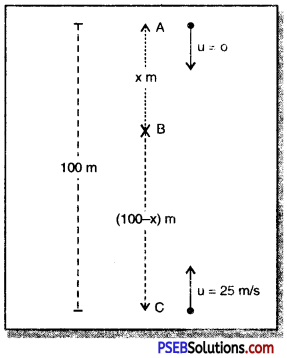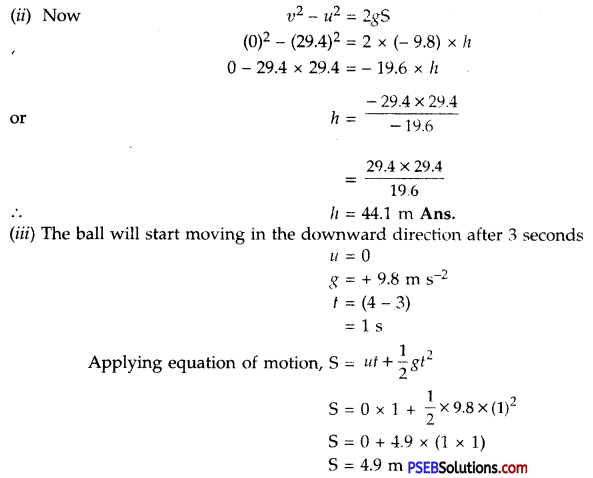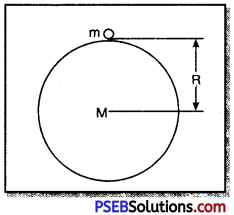Punjab State Board PSEB 9th Class Hindi Book Solutions Chapter 16 बचेंद्री पाल Textbook Exercise Questions and Answers.
PSEB Solutions for Class 9 Hindi Chapter 16 बचेंद्री पाल
Hindi Guide for Class 9 PSEB बचेंद्री पाल Textbook Questions and Answers
(क) विषय-बोध
1. निम्नलिखित प्रश्नों के उत्तर एक या दो पंक्तियों में दीजिए
प्रश्न 1.
बद्री पाल ने बचपन में क्या दृढ़ निश्चय कर लिया था ?
उत्तर:
बचेंद्री पाल ने बचपन में यह दृढ़ निश्चय कर लिया था कि वह परिवार में किसी से पीछे नहीं रहेगी।
प्रश्न 2.
बचेंद्री पाल के माता-पिता किस बात से दुःखी थे ?
उत्तर:
बद्री पाल के माता-पिता अपने बच्चों की सपनों की दुनिया से दुःखी थे।
प्रश्न 3.
बचेंद्री पाल ने किन मैदानी खेलों में कप जीते ?
उत्तर:
बद्री पाल ने गोला फेंक, डिस्क फेंक तथा लंबी दौड़ में कप जीते।
![]()
प्रश्न 4.
बचेंद्री पाल ने कब अपने आपको पर्वतारोहण के लिए पूरी तरह समर्पित किया?
उत्तर:
बचेंद्री पाल ने अपनी पढ़ाई पूरी करने के बाद अपने आपको पर्वतारोहण के लिए पूरी तरह समर्मित किया।
प्रश्न 5.
‘रैपलिंग’ का क्या अर्थ है ?
उत्तर:
रैपलिंग का अर्थ है-ऊँची चट्टान अथवा हिमखंड से एक नाइलोन की रस्सी के सहारे कुछ ही क्षणों में नीचे आना।
प्रश्न 6.
बचेंद्री पाल और अंग दोरजी ने बर्फ काटने के लिए किस चीज़ का इस्तेमाल किया ?
उत्तर:
बचेंद्री पाल और अंग दोरजी के बर्फ काटने के लिए फावड़े का इस्तेमाल किया।
प्रश्न 7.
एवरेस्ट की चोटी पर पहुँचने वाली प्रथम भारतीय महिला कौन है ?
उत्तर:
एवरेस्ट की चोटी पर पहुँचने वाली प्रथम भारतीय महिला बचेंद्री पाल है।
प्रश्न 8.
एवरेस्ट पर आनन्द के क्षणों में बचेंद्री पाल को किन का ध्यान आया ?
उत्तर:
एवरेस्ट पर आनंद में क्षणों में बचेंद्री पाल को अपने माता-पिता का ध्यान आया।
प्रश्न 9.
बचेंद्री पाल को कौन-कौन से पुरस्कार दिए गए ?
उत्तर:
बचेंद्री पाल को पद्मश्री, अर्जुन पुरस्कार तथा प्रतिष्ठित स्वर्ण पदक पुरस्कार दिए गए।
![]()
2. निम्नलिखित प्रश्नों के उत्तर तीन या चार पंक्तियों में दीजिए
प्रश्न 1.
दस साल की आयु में ही बचेंद्री पाल निडर और स्वतंत्र कैसे बन गई थी ?
उत्तर:
दस साल की आयु में ही बचेंद्री पाल जंगलों और पहाड़ी ढलानों पर प्रायः अकेली घूमती थी। वह प्रकृति के साथ स्वंतत्र होकर खेलती थी। प्रकृति के साथ इस खुलाव से निडर तथा स्वतंत्र बन गई।
प्रश्न 2.
बद्री पाल प्रतियोगिताओं के शुरू होने से पहले ही कौन-कौन सी दौड़ का अभ्यास करना शुरू कर देती थी ?
उत्तर:
बचेंद्री पाल प्रतियोगिताओं के शुरू होने से पहले ही तीन टॅगडी, सूई धागे वाली दौड, बोरा दौड तथा सिर पर पानी भरा मटका रखकर होने वाली दौड़ आदि का अभ्यास करना शुरू कर देती थी।
प्रश्न 3.
बचेंद्री पाल ने अपनी शिक्षा कैसे प्राप्त की ?
उत्तर:
बचेंद्री पाल दिन के समय केवल अपने हिस्से का ही नहीं बल्कि कहीं अधिक काम करती थी। वह अपने मित्रों से किताबें उधार लेकर देर रात तक पढ़ती थी। उसने सिलाई-कढ़ाई का काम करके अपनी पढ़ाई का खर्च उठाया।
प्रश्न 4.
बचेंद्री पाल ने नेहरू संस्थान के पर्वतारोही कोर्स में क्या-क्या सीखा ?
उत्तर:
बचेंद्री पाल ने नेहरू संस्थान के पर्वतारोही कोर्स में बर्फ और चट्टानों पर चढ़ने के तरीके सीखे। रैपलिंग करना सीखा। अभियान को आयोजित करने का प्रशिक्षण भी लिया।
प्रश्न 5.
तेनजिंग ने बचेंद्री पाल की तारीफ में क्या कहा ?
उत्तर:
तेनजिंग ने बचेंद्री पाल की तारीफ में कहा कि तुम एक पक्की पर्वतीय लड़की लगती हो तुम्हे तो शिखर पर पहले की प्रयास में पहुँच जाना चाहिए।
प्रश्न 6.
एवरेस्ट पर पहुँच कर बचेंद्री पाल ने घुटनों के बल बैठ कर क्या किया ?
उत्तर:
एवरेस्ट पर पहुँच कर बचेंद्री पाल ने घुटनों के बल बैठकर बर्फ पर अपना माथा लगाया और सागर माथे के ताज का चुंबन लिया। थैले से दुर्गा माँ का चित्र तथा हनुमान चालीसा निकाला। उन्हें लाल कपड़े में लपेटकर छोटीसी पूजा की तथा बर्फ में दबा दिया।
![]()
3. निम्नलिखित प्रश्नों के उत्तर पाँच-छ: पंक्तियों में दीजिए-
प्रश्न 1.
बचेंद्री पाल का चरित्र-चित्रण कीजिए।
उत्तर:
बचेंद्री पाल का जन्म उत्तरांचल के चमौली जिले में बंपा गाँव में 24 मई, सन् 1954 ई० को हुआ। इनकी माता का नाम हंसादेई नेगी ततथा पिता का नाम किशन सिंह पाल है। वह बचपन से ही निडर तथा साहसी थी। वह बहुत बड़ी स्वप्न दुष्टा थी। वह दृढ़ निश्चयी थी। उसने बचपन में ही अपने परिवार में किसी से पीछे न रहने का निश्चय कर लिया था। उसने एवरेस्ट पर चढ़ने का सपना देखा और कठिन परिश्रम से उसे पूरा किया। वह प्रतियोगिता में पूरे परिश्रम से भाग लेती थी।
प्रश्न 2.
बचेंद्री पाल के एवरेस्ट की चोटी पर पहुँचने का वर्णन कीजिए।
उत्तर:
बचेंद्री पाल ने 1 मई, सन् 1984 तक एवरेस्ट पर जाने की योजना की सही तैयारी कर ली थी। 8 मई को साउथ कोल पहुँच कर 9 मई को चोटी पर पहुँचने का प्रयास करना था। उसने 9 मई को प्रातः सात बजे शिखर कैंप से प्रस्थान किया। 16 मई प्रातः 8 बजे तक दूसरे कैंप में पहुँच गई। अगली सुबह: 6:20 पर उसने अंग दोरजी के साथ बिना रस्सी के चढ़ाई शुरू की। उन्होंने चट्टानों पर चढ़ते हुए बर्फ को काटने के लिए फावड़े का प्रयोग किया। वे दो घंटे से पहले ही शिखर के कैंप पर पहुँच गए। इस प्रकार निरंतर बढ़ते हुए वह 23 मई, सन् 1984 को एवरेस्ट चोटी पर पहुँच गई।
(ख) भाषा-बोध
1. निम्नलिखित एकवचन शब्दों के बहुवचन रूप लिखिएएकवचन
एकवचन – बहुवचन
किताब – ………….
क़मीज़ – ………….
चट्टान – ………….
तकनीक – ………….
चादर – ………….
साँस – ………….
लड़की – ………….
मटका – ………….
धागा – ………….
परीक्षा – ………….
इच्छा – ………….
श्रेणी – ………….
उत्तर:
एकवचन – बहुवचन
किताब – किताबें
क़मीज़ – कमीजें
चट्टान – चट्टानें
तकनीक – तकनीकियाँ
चादर – चादरें
साँस – साँसें
लड़की – लड़कियाँ
मटका – मटके
धागा – धागे
परीक्षा – परीक्षाएँ
इच्छा – इच्छाएँ
श्रेणी – श्रेणियाँ
![]()
2. निम्नलिखित शब्दों में उपसर्ग तथा मूल शब्द अलग-अलग करके लिखिए
शब्द – उपसर्ग – मूलशब्द
प्रवासी – …………. – ………….
पाशिक्षण – …………. – ………….
प्रशिक्षक – …………. – ………….
परिवार – …………. – ………….
परिश्रम – …………. – ………….
अभियान – …………. – ………….
उत्तर:
शब्द – उपसर्ग – मूलशब्द
प्रवासी – प्र – वासी
प्रशिक्षण – प्र – शिक्षण
प्रशिक्षक – प्र – शिक्षक
परिवार – परि – वार
परिश्रम – परि – श्रम
अभियान – अभि – यान
3. निम्नलिखित शब्दों के प्रत्यय तथा मूल शब्द अलग-अलग करके लिखिए
शब्द – मूलशब्द – प्रत्यय
पढ़ाई – पढ़ – आई
ऊँचाई – …………. – ………….
चढ़ाई – …………. – ………….
न्यूनतम – …………. – ………….
बचपन – …………. – ………….
सफलता – …………. – ………….
कठिनाई – …………. – ………….
सुरक्षित – …………. – ………….
उत्तर:
शब्द – मूलशब्द – प्रत्यय
पढ़ाई – पढ़ – आई
ऊँचाई – ऊँच – आई
चढ़ाई – चढ़ – आई
न्यूनतम – न्यून – तम
बचपन – बच्चा – पन
सफलता – सफल – ता
कठिनाई – कठिन – आई
सुरक्षित – सुरक्षा – इत
![]()
(ग) रचनात्मक अभिव्यक्ति
प्रश्न 1.
कल्पना कीजिये कि आप पर्वतारोहण के लिए गये हैं। अपने मित्र को पत्र लिखकर पर्वतारोहण का अनुभव बताइए।
उत्तर:
108, विकास नगर,
नई दिल्ली ।
4 मई, 20…
प्रिय मित्र,
नमस्कार।
मैं पिछले सप्ताह अपने मित्र के साथ हिमालय पर्वतारोहण के लिए गया हुआ था। हमने कठिन संघर्ष करके अनेक चट्टानों को पार किया। हमने अपनी मंजिल पर जाने से पहले चार पड़ाव डाले। इसके लिए हमें चार दिन का समय लगा। हम अपने साथ ज़रूरत का सारा सामान लिए हुए थे। अनेक कठिनाइयों को झेलते हुए अतंतः हम पर्वत पर पहुँच गए। वहाँ पहुँच कर मैंने प्रभु का कोटि-कोटि धन्यवाद किया। वहाँ से अगले दिन हमने उतरना शुरू किया और इस तरह तीन-दिन में हम नीचे कुशल से आ गए। इस यात्रा में मैंने खूब आनंद उठाया।
आपका प्रिय,
विक्रम
प्रश्न 2.
आपने अपने भविष्य के लिए क्या लक्ष्य निर्धारित किया है ? ।
उत्तर:
मैं एक आदर्श अध्यापक बनना चाहता हूँ। मैं इसलिए अध्यापक बनना चाहता हूँ ताकि अपने देश की सच्ची सेवा कर सकूँ। मैं एक आदर्श अध्यापक बनकर बच्चों को आदर्श नागरिक बनाना चाहता हूँ। मैं उन्हें समाज, संस्कृति, धर्म की शिक्षा देना चाहता हूँ। मैं बच्चों का सर्वांगीण विकास करना चाहता हूँ। मैं जीवन भर स्वयं शिक्षा से जुड़कर देश के कर्णधारों को शिक्षा प्रदान करना चाहता हूँ।
(घ) पाठेत्तर सक्रियता
प्रश्न 1.
अपने विद्यालय में होने वाले खेलों में बढ़चढ़ कर भाग लें।
उत्तर:
अध्यापक की सहायता से करें।
प्रश्न 2.
‘मन के हारे हार, मन के जीते जीत’-इस विषय पर कक्षा में परिचर्चा आयोजित करें।
उत्तर:
अध्यापक की सहायता से करें।
प्रश्न 3.
विभिन्न क्षेत्रों में उच्च स्थान प्राप्त करने वाली भारतीय महिलाओं के चित्र चार्ट पर लगाकर कक्षा में टाँगे।
उत्तर:
अध्यापक की सहायता से करें।
![]()
(ङ) ज्ञान-विस्तार
1. एवरेस्ट पर्वत : एवरेस्ट पर्वत (नेपाली में सागरमाथा अर्थात् स्वर्ग का शीर्ष, संस्कृत में देवगिरि) दुनिया का सबसे ऊँचा पर्वत शिखर है जिसकी ऊँचाई 8848 मीटर है।
2. तेनजिंग नॉरगे : तेनजिंग नॉरगे एक नेपाली पर्वतारोही थे। वे पहले व्यक्ति थे जिन्होंने मांऊट एवरेस्ट की चोटी पर पहला मानव कदम रखा। इस मिशन में न्यूजीलैंड के सर एडमंड हिलेरी उनके साथ थे। 29 मई, सन् 1953 को सातवें प्रयास में उन्हें इस मिशन में सफलता मिली।
3. भारत की प्रथम महिला :
(i) भारत की प्रथम महिला प्रधानमंत्री – इंदिरा गांधी
(ii) भारत की प्रथम महिला राज्यपाल – सरोजिनी नायडू
(iii) भारत की प्रथम विश्व सुंदरी – कु० रीता फारिया
(iv) भारत की प्रथम मिस यूनिवर्स – सुष्मिता सेन ।
(v) यूनाइटेड नेशन जनरल एसेम्बली की प्रथम भारतीय महिला और अध्यक्ष – विजय लक्ष्मी पंडित
(vi) किसी उच्च न्यायालय (केरल उच्च न्यायालय) की प्रथम भारतीय महिला जज – अन्ना चान्डी
(vii) भारतीय पुलिस सेवा (आई० पी० एस०) में भर्ती होने वाली प्रथम महिला – किरण बेदी
(viii) माऊंट एवरेस्ट पर चढ़ने वाली प्रथम भारतीय महिला – बचेंद्री पाल
(ix) भारत के उच्चतम न्यायालय की प्रथम महिला जज – न्यायमूर्ति एम० फातिमा बीबी
(x) अन्तरिक्ष में जाने वाली प्रथम भारतीय महिला – कल्पना चावला
(xi) भारत की प्रथम महिला राष्ट्रपति – प्रतिभा पाटिल
(xii) लोकसभा की प्रथम महिला अध्यक्ष – मीरा कुमार
![]()
PSEB 9th Class Hindi Guide बचेंद्री पाल Important Questions and Answers
1. निम्नलिखित प्रश्नों के उत्तर एक या दो पंक्तियों में दीजिए
प्रश्न 1.
बचेंद्री पाल अपने माता-पिता की कौन-सी संतान है ?
उत्तर:
बचेंद्री पाल अपने माता-पिता की तीसरी संतान है।
प्रश्न 2.
बचेंद्री पाल को निडर और स्वतंत्र किसने बनाया ?
उत्तर:
प्रकृति के साथ उसके खुलाव ने बचेंद्री पाल को निडर और स्वतंत्र बना दिया।
प्रश्न 3.
बचेंद्री पाल की कल्पनाओं में कौन आनंद लेता था ?
उत्तर:
परिवार के छोटे सदस्य बचेंद्री पाल की कल्पनाओं में आनंद लेते थे।
2. निम्नलिखित प्रश्नों के उत्तर तीन या चार पंक्तियों में दीजिए
प्रश्न 1.
बचेंद्री पाल किसमें विशिष्टता प्राप्त करना चाहती थी?
उत्तर:
बचेंद्री पाल हर तरह की बाहरी क्रीड़ा में विशिष्टता प्राप्त करना चाहती थी। वह विशेष रूप से लडकों के साथ होने वाली प्रतियोगिताओं में विशिष्टता चाहती थीं।
प्रश्न 2.
बचेंद्री पाल के जीवन का क्या उद्देश्य था?
उत्तर:
बचेंद्री पाल के जीवन का पहला उद्देश्य शिक्षा प्राप्त करना था। उसका दूसरा उद्देश्य पवर्तरोहण था।
![]()
3. निम्नलिखित प्रश्नों के पांच-छः पंक्तियों में उत्तर दीजिए
प्रश्न 1.
अपने आप को मजबूत बनाने के लिए बचेंद्री पाल ने क्या किया ?
उत्तर:
अपने आप को मज़बूत बनाने के लिए बद्री पाल घास चारे तथा सूखी लकड़ी के भारी गट्ठर घर लाने लगी। वह रोज़ आने-जाने का रास्ता बदलने लगी। वह अधिक दुर्गम रास्तों और घाटियों से होकर निकलने लगी। यह जानबूझकर पत्थरों के ऊपर से चलती थी। वह सीधी खड़ी ढलान चट्टानों से नीचे उतरने लगी थी।
प्रश्न 2.
बचेंद्री पाल के उत्साह और दृढ़ संकल्प को देखकर कौन प्रभावित हुए और कैसे ?
उत्तर:
बचेंद्री पाल के उत्साह और दृढ़ संकल्प को देखकर परिवार का प्रत्येक आदमी बहुत प्रभावित हुआ। उसकी माता तथा बहन कमला ने उसे पढ़ाने के लिए पिता से वकालत की। इससे उसे नौवीं कक्षा में दाखिले की अनुमति मिल गई।
एक शब्द/एक पंक्ति में उत्तर दीजिए
प्रश्न 1.
‘बचेंद्रीपाल’ पाठ किसकी रचना है ?
उत्तर:
बचेंद्रीपाल।
प्रश्न 2.
बद्रीपाल कैसी लड़की थी ?
उत्तर:
वह एक स्वप्न दृष्टा लड़की थी।
प्रश्न 3.
पर्वतारोही कोर्स के लिए बचेंद्रीपाल ने कहाँ आवेदन किया ?
उत्तर:
नेहरू संस्थान में।
प्रश्न 4.
बचेंद्रीपाल एवरेस्ट की चोटी पर कब पहुँची ?
उत्तर:
23 मई, सन् 1984 को दोपहर 1 बजे।
प्रश्न 5.
शिखर पर बचेंद्रीपाल ने कितना समय व्यतीत किया ?
उत्तर:
43 मिनट।
![]()
हाँ-नहीं में उत्तर दीजिए
प्रश्न 6.
बचेंद्रीपाल दस वर्ष की आयु में ही पहाड़ी ढलानों पर घूमती थी।
उत्तर:
हाँ।
प्रश्न 7. बचेंद्रीपाल सिलाई करके दस-बीस रुपए रोज़ कमाने लगी।
उत्तर:
नहीं।
सही-गलत में उत्तर दीजिए
प्रश्न 8.
इंडियन माउन्टेनियरिंग फाउंडेशन ने सन् 1984 ई० के एवरेस्ट अभियान के लिए बचेंद्रीपाल को चुना।
उत्तर:
सही।
प्रश्न 9.
बचेंद्रीपाल शिखर कैंप पर दो घंटे से अधिक समय में पहुँची।
उत्तर:
गलत।
रिक्त स्थानों की पूर्ति करें
प्रश्न 10.
तुम्हें तो ……. पर पहले ही …….. में ……. जाना चाहिए।
उत्तर:
तुम्हें तो शिखर पर पहले ही प्रयास में पहुँच जाना चाहिए।
प्रश्न 11.
एवरेस्ट ……. में मेरी …….. इच्छाओं की ……. हुई है।
उत्तर:
एवरेस्ट चढ़ाई से मेरी हार्दिक इच्छाओं की पूर्ति हुई है।
बहुविकल्पी प्रश्नों में से सही विकल्प चुनकर उत्तर लिखें
प्रश्न 12.
बद्रीपाल का जन्म कब हुआ था ?
(क) 24 मई, 1954
(ख) 24 मई, 1955
(ग) 24 मई, 1956
(घ) 24 मई, 1958.
उत्तर:
(क) 24 मई, 1954.
प्रश्न 13.
बचेंद्रीपाल ने आठवीं की परीक्षा लगभग कितने वर्षों की आयु में उत्तीर्ण की थी ?
(क) 11
(ख) 12
(ग) 13
(घ) 14.
उत्तर:
(ग) 13.
प्रश्न 14.
आरोहण योजना की पूरी तैयारी कब तक हो गई थी ?
(क) मई 1980 तक
(ख) मई 1982 तक
(ग) मई 1984 तक
(घ) मई, 1986 तक।
उत्तर:
(ग) मई, 1984 तक।
![]()
प्रश्न 15.
कैम्प दो तक बचेंद्रीपाल कब पहुँची ?
(क) 8 मई
(ख) 9 मई
(ग) 15 मई
(घ) 16 मई।
उत्तर:
(घ) 16 मई।
प्रश्न 16.
‘मैं बहुत खुश हूँ’-कथन किसका है ?
(क) बचेंद्री का
(ख) दोरजी का
(ग) तेनजिंग का
(घ) कमला का।
उत्तर:
(ख) दोरजी का।
कठिन शब्दों के अर्थ
स्वप्नदृष्टा = स्वप्न देखने वाला। प्रवासी = दूसरे स्थान का निवासी। बेहतर = अच्छा। न्यूनतम = सब से कम, कम से कम। साकार = आकार युक्त। शिखर = चोटी। क्रीड़ा = खेल। इस्तेमाल = प्रयोग। विशिष्टता = विशेषता। प्रतियोगिता = मुकाबला। बर्दाश्त = सहन करने की शक्ति। साऊथ = दक्षिण। पर्वतारोहण = पर्वतों पर चढ़ना। प्रारंभिक = शुरू का। पर्वतारोही = पहाड़ पर चढ़ने वाला। रोमांच = रोंगटे खड़े होना। आश्चर्यचकित = हैरान। हिमखंड = बर्फ का टुकड़ा। प्रशिक्षण = नियमित रूप से दी जाने वाली व्यावहारिक शिक्षा, ट्रेनिंग। संस्तुति = प्रशंसा। इंतजार = प्रतीक्षा। प्रशिक्षक = प्रशिक्षण देने वाला। प्रोत्साहन = किसी काम के लिए उत्साह बढ़ाना। दुर्गम = जहाँ पहुँचना कठिन हो। स्वर्ण = सोना। क्रिया-कलाप = किसी व्यक्ति द्वारा किए जाने वाले काम। रैपलिंग = ऊँची चट्टान से रस्सी द्वारा नीचे उतरना। दक्ष = निपुण, कुशल। शिखर = पहाड़ की चोटी। आरोहण = ऊपर की ओर चढ़ना। प्रस्थान = जाना, रवानगी। बरफ = बर्फ़। आरोही = चढ़ने या ऊपर जाने वाला। एवरेस्ट = हिमालय की सबसे ऊँची चोटी। उपस्कर = सामान। फावड़ा = कुदाल। प्रतिष्ठित = सम्मानित।
बचेंद्री पाल Summary
बचेंद्री पाल जीवन-परिचय
बचेंद्री पाल का जन्म उत्तरांचल राज्य के चमौली जिले में बपा गाँव में 24 मई, सन् 1954 ई० को हुआ। इनकी माता का नाम हँसादेई नेगी तथा पिता का नाम किशन सिंह पाल है। इनका बचपन ग़रीबी में व्यतीत हुआ। इनके पिता पढ़ाई का खर्च उठाने में असमर्थ थे। इसलिए बचेंद्री पाल को आठवीं से आगे की पढ़ाई का खर्च स्वयं उठाना पड़ा। इसके लिए उसने सिलाई-कढ़ाई शुरू की। इन्होंने कठिन परिश्रम करते हुए एम०ए० (संस्कृत), बी०एड० की शिक्षा प्राप्त की।
इनको पहाड़ों पर चढ़ने का बचपन से ही शौक था। सन् 1984 ई० में भारत का चौथा एवरेस्ट अभियान शुरू हुआ। तब तक दुनिया में केवल चार महिलाएँ ही चढ़ाई में सफल हो पाई थीं। सन् 1984 ई० में बचेंद्री पाल का एवरेस्ट चढ़ाई अभियान में चयन हुआ। इन्होंने 7 महिलाओं और 11 पुरुषों के साथ एवरेस्ट चढ़ाई शुरू की। 23 मई, सन् 1984 ई० को 1 बजकर, 7 मिनट पर इन्होंने एवरेस्ट पर सफलतापूर्वक कदम रखा। ऐसा करने वाली वे भारत की पहली तथा संसार की पांचवीं महिला पर्वतारोही बन गई।
बचेंद्री पाल एक श्रेष्ठ पर्वतारोही महिला हैं। उन्होंने एवरेस्ट विजय अभियान का रोचक वर्णन किया है। उन्होंने पर्वतारोहण यात्रा के अनेक सजीव चित्र खींचे हैं। उनकी भाषा सरल, सहज एवं स्वाभाविक है।
![]()
बचेंद्री पाल पाठ का सार
‘बद्री पाल’ यात्रा वृत्तांत पर्वतारोही बचेंद्री पाल द्वारा लिखित है। इसमें लेखिका ने अपनी एवरेस्ट विजय अभिमान की यात्रा का रोचक वर्णन किया है। इसमें इन्होंने अपनी सम्पूर्ण जीवन यात्रा तथा पर्वतारोहण यात्रा का वर्णन किया है। बचेंद्री पाल का जन्म 24 मई, सन् 1954 ई० को हुआ था। बचपन से ही उन्होंने लड़की होकर भी कुछ अलग करने का निश्चय कर लिया था। वह बहुत बड़े-बड़े सपने देखा करती थी। वह दस वर्ष की उम्र में ही जंगलों तथा पहाड़ी ढलानों पर अकेली निडर होकर घूमा करती थी। उसका बचपन अत्यंत गरीबी में व्यतीत हुआ। किंतु उसने बचपन में ही माता-पिता को कुछ अलग करने को कहा, वह पढ़ाई में बहुत अच्छी थी। खेलकूद में भी बहुत श्रेष्ठ- उसने गोला फेंक, डिस्क फेंक और लंबी कूद में अनेक कप जीते। आठवीं कक्षा अच्छे अंकों से पास की। आगे की पढ़ाई सिलाईकढ़ाई का काम करके जारी रखी क्योंकि उसके पिता ने आगे पढ़ने से मना कर दिया था। लगातार कठोर मेहनत करके उसने एम०ए०, बी० एड० की पढ़ाई की। घर में खाली बैठने की बजाय उसने नेहरू संस्थान के आरंभिक पर्वतरोही कोर्स में प्रवेश ले लिया। यहाँ बर्फ तथा चट्टानों पर चढ़ने के तरीकों का अध्ययन किया।
रैपलिंग के रोमांच का अनुभव किया। यहाँ अभियान को आयोजित करने का भी प्रशिक्षण लिया। इसके बाद काला नाग 6387 मीटर की चढ़ाई की। इस चढ़ाई में उसे ‘ए’ ग्रेड मिला। यहाँ से अन्य अभियानों में भाग लेने की अनुमति मिल गई। सन् 1984 में एवरेस्ट अभियान के लिए चुना गया। इसके लिए 9 मई, सन् 1984 ई० को प्रातः सात बजे शिखर कैंप से प्रस्थान किया गया। 16 मई को प्रात: आठ बजे तक अभियान के दूसरे कैंप तक साथियों के साथ पहुँच गई। यहाँ से अगले दिन सुबह चढ़ाई शुरू की। यहाँ से बचेंद्री पाल ने अपने साथियों के साथ बिना रस्सी के ही चढ़ाई शुरू की। वह अंग दोर जी के साथ निश्चित गति से ऊपर चढ़ती गई। जमी बर्फ से सीधी व ढलाऊ चट्टानें सख्त एवं भुरभुरी थीं। वे दो घंटे से पहले ही शिखर के कैंप में पहुंच गए। अंतत: 23 मई, सन् 1984 के दिन दोपहर एक बजकर सात मिनट पर वह एवरेस्ट की चोटी पर पहुँच गई। उसने घुटनों के बल बैठकर सागरमाथे के ताज का चुंबन किया। थैले से दुर्गा माँ का चित्र तथा हनुमान चालीसा निकाला तथा लाल कपड़े में लपेटकर छोटी-सी पूजा अर्चना की। आनंद के उस क्षण में माता-पिता का ध्यान आया। उसने हाथ जोड़ कर दोरजी के प्रति आदर प्रकट किया। वह बहुत खुश थी। उस शिखर पर उसने 43 मिनट बिताए। चोटी के समीप के खुले स्थान से पत्थरों के कुछ नमूने लेकर वापस यात्रा शुरू की। इस यात्रा के पर्वतारोहण में श्रेष्ठता के लिए भारतीय पर्वतारोहण संघ ने उसे प्रतिष्ठित स्वर्ण पदक दिया तथा अनेक सम्मान तथा पुरस्कार दिए। भारत सरकार द्वारा पद्मश्री तथा अर्जुन पुरस्कार दिया गया।

